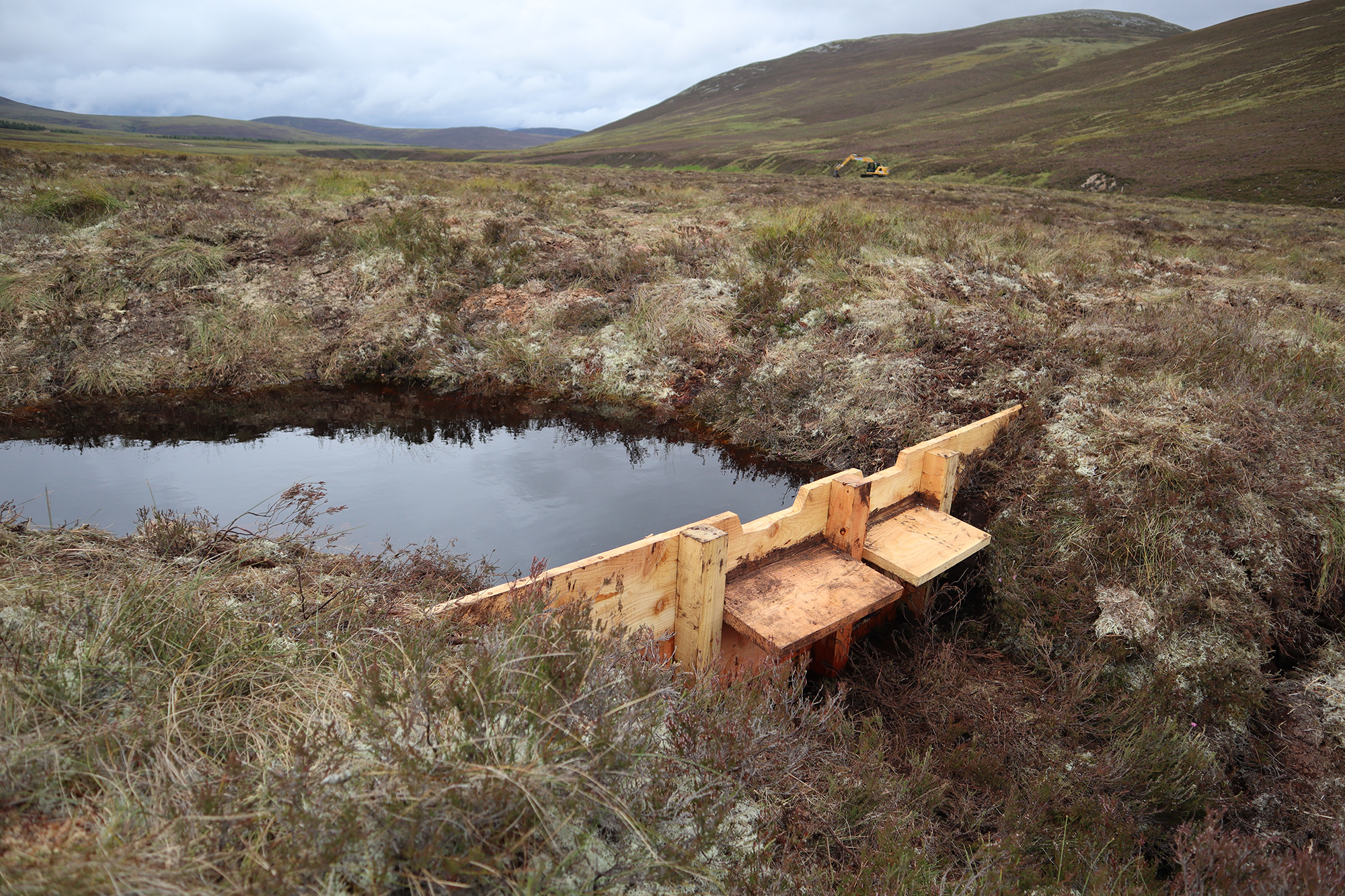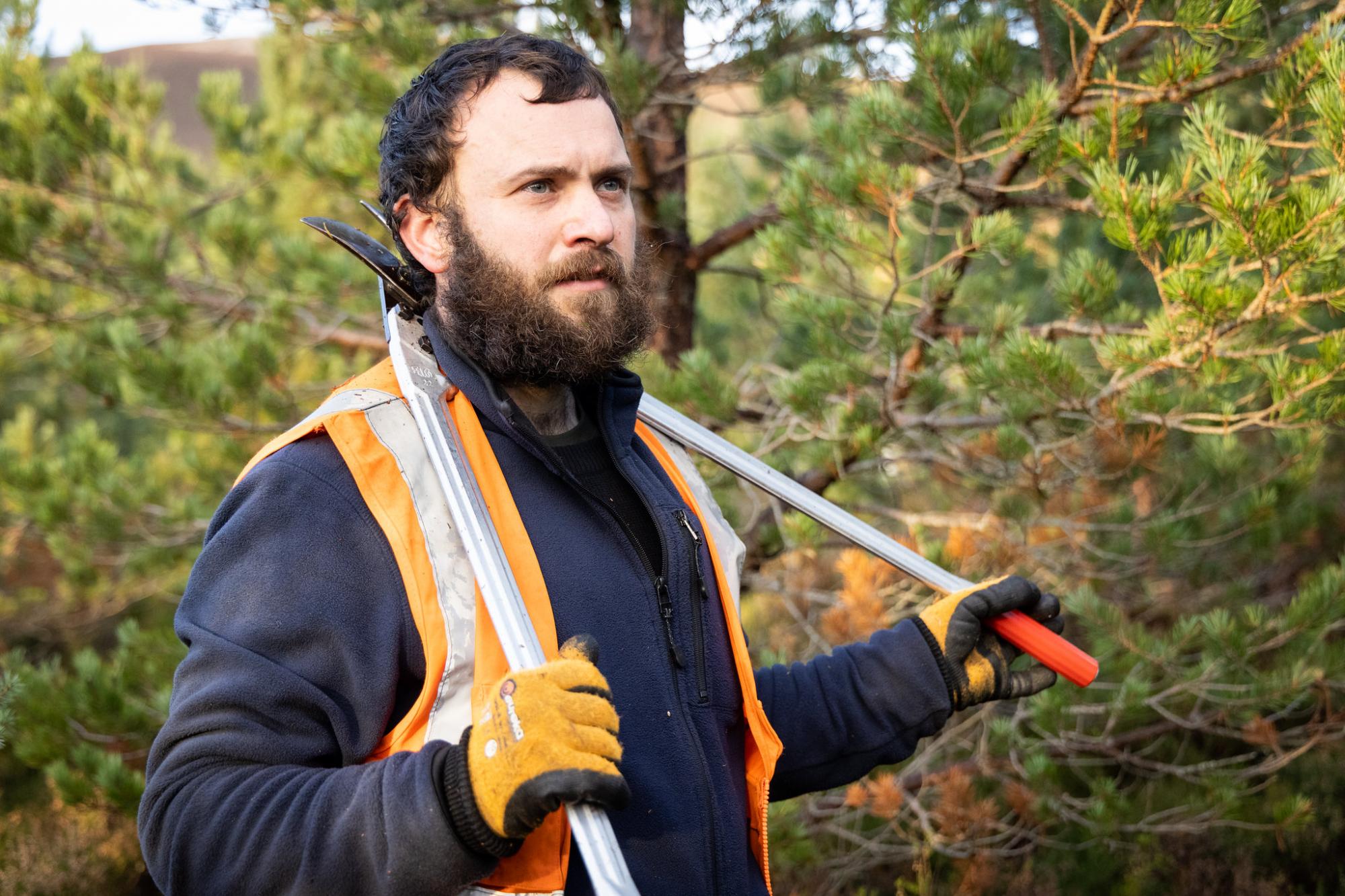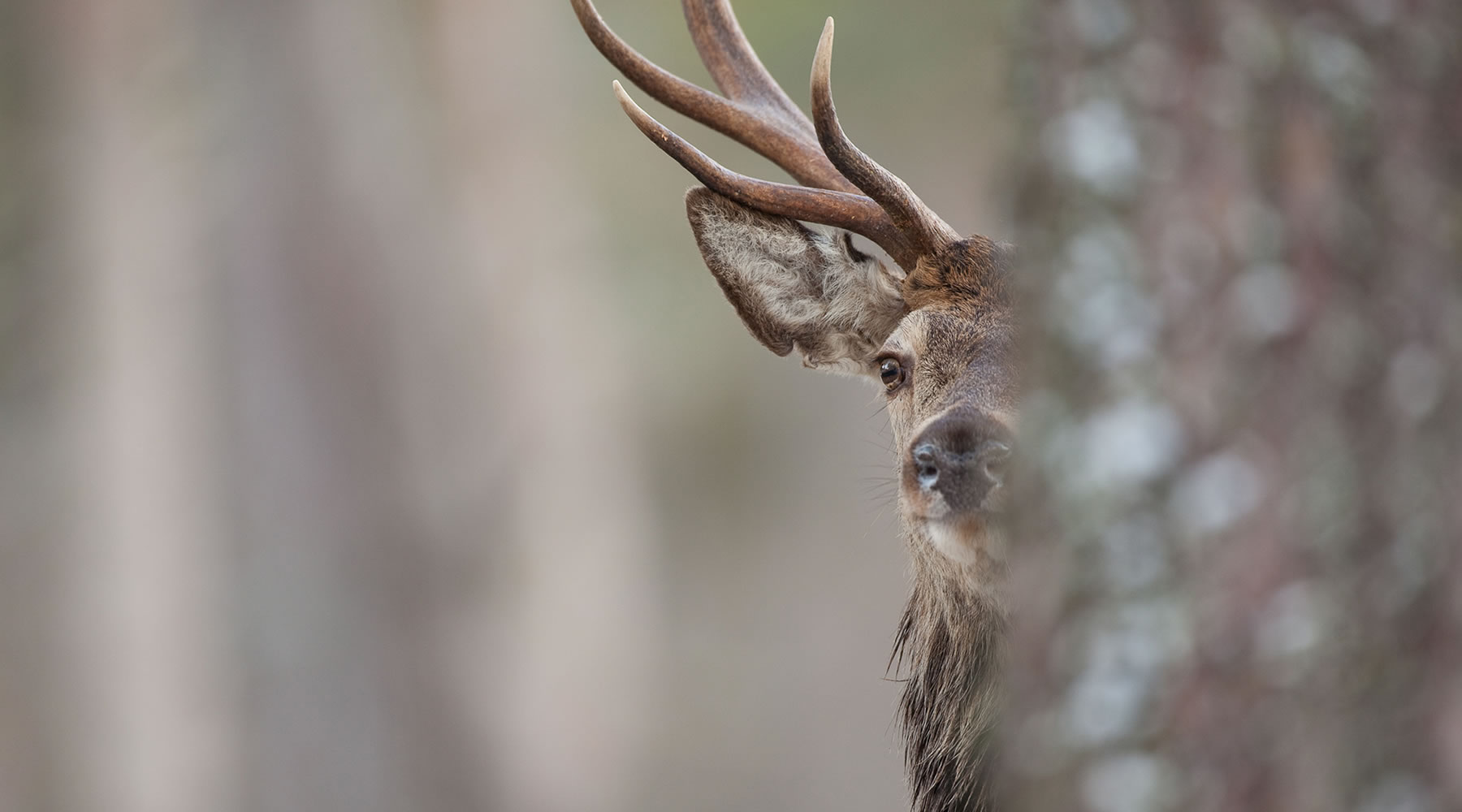

Peatlands are a type of wetland habitat, where the waterlogged conditions create an oxygen-poor environment, so plants cannot properly decompose, but instead slowly build up in layers to form peat. They are hugely important in the fight against climate change, and as a home to many rare and threatened species.
Many of the peatlands in the UK have been drained, over-grazed, planted with non-native trees, or damaged by atmospheric pollutants. As a result, the surface of the peat has been opened to erosion. These erosion ‘hags’ are then further damaged by trampling by deer, and by the flow of surface water after heavy rainfall or melting snow. Once exposed, the peat reacts with oxygen and the stored carbon is released into the atmosphere as CO2. Natural recovery from this damage is very slow and can take many decades.
Our peatland restoration work reduces carbon emissions and supports increased long-term carbon capture. Healthy peatlands also provide habitat for specialised wildlife including a range of dragonfly and damselfly species.
Our peatland restoration work involves:

Using diggers, staff and local contractors work to block drainage ditches and re-profile damaged blanket bog surface which slows water flow and restores the water table. This enables peat sediment to build up, bog vegetation to recover, and carbon to be sequestered. This also helps create better conditions for further peat formation, capturing more atmospheric carbon.

Historically, many of the bogs in CC forests have been drained and then planted with non-native conifers, with the aim of producing timber. These bogs are vital habitats in the forest, and though they often have native trees growing on them, this tree cover is very modest, compared with dense planted trees. Cairngorms Connect is restoring these bogs by removing non-native trees, blocking drainage ditches, and allowing native plant cover to re-establish.

We use turf and heather-and-moss ‘bales’ to re-establish plants on the blanket bog surface, making it secure against further erosion. This stabilises the existing peatland allowing the bare peat to re-vegetate. Mosses and grasses use CO2 to create plant tissue and, when this dies, it becomes a new layer of peat.

Ecologically unsustainable levels of trampling and grazing by Deer in this area has had a big effect on peatland. Decades of collaborative Deer Management across the Cairngorms Connect Partnership area has reduced the ongoing damage to vast tracts of blanket bog. By continuing to reduce grazing pressure, bog plants can recover, binding together the peatland surface. Read more about our Deer Management here.